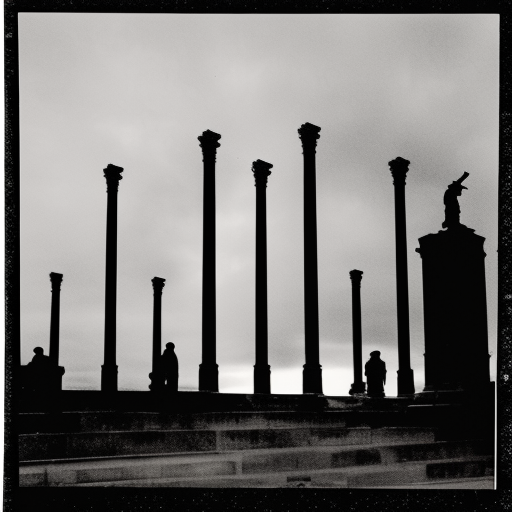The Roman Architectural Revolution
The Roman Architectural Revolution refers to the significant advancements in architectural design and construction techniques that occurred during the Roman Empire. These innovations transformed the built environment and had a lasting impact on architecture throughout history.
Introduction of Concrete
One of the key developments of the Roman Architectural Revolution was the widespread use of concrete. The Romans were the first civilization to utilize concrete as a primary building material. They discovered that by mixing volcanic ash, lime, and water, they could create a durable and versatile substance that could be molded into various shapes. This allowed for the construction of large-scale structures such as aqueducts, bridges, and monumental buildings.
Arch and Vault Systems
Another significant advancement was the use of arches and vaults in architectural design. The Romans perfected the technique of constructing arches by using wedge-shaped stones called voussoirs. Arches allowed for the creation of larger and more stable structures, as they distributed weight more efficiently. Vaults, which are a series of arches placed side by side, were used to create spacious interiors and support the roofs of buildings.
Monumental Architecture
The Romans were renowned for their monumental architecture, which showcased their engineering prowess and imperial grandeur. One of the most iconic examples is the Colosseum in Rome. This massive amphitheater could hold up to 50,000 spectators and was used for gladiatorial contests, animal hunts, and other public spectacles. The Colosseum featured a complex system of arches, vaults, and concrete construction, demonstrating the Romans’ mastery of architectural techniques.
Aqueducts and Bridges
The Roman Architectural Revolution also saw the construction of extensive aqueducts and bridges. Aqueducts were used to transport water over long distances, providing a reliable water supply to cities and towns. These structures utilized arches and concrete to create elevated channels that could span valleys and cross rivers. The Pont du Gard in France is a remarkable example of a Roman aqueduct that still stands today.
Similarly, Roman bridges were engineering marvels that connected different parts of the empire. They were constructed using arches and provided crucial transportation routes for both people and goods. The Ponte Milvio in Rome is an excellent example of a Roman bridge that has survived for centuries.
Domestic Architecture
In addition to monumental structures, the Romans also made significant advancements in domestic architecture. They introduced the concept of the atrium, a central courtyard surrounded by rooms, which became a common feature in Roman houses. The atrium allowed for natural light and ventilation, while the surrounding rooms provided privacy and functional spaces.
Roman houses also featured mural paintings and intricate mosaics as decorative elements. These artistic expressions showcased the wealth and sophistication of Roman society.
Legacy
The Roman Architectural Revolution had a profound influence on subsequent architectural styles. The use of arches, vaults, and concrete became fundamental elements in Byzantine, Gothic, and Renaissance architecture. The Romans’ innovative construction techniques and emphasis on monumental structures set a precedent for future civilizations.
In conclusion, the Roman Architectural Revolution was a period of significant advancements in architectural design and construction techniques. The introduction of concrete, the use of arches and vaults, and the construction of monumental structures such as the Colosseum and aqueducts transformed the built environment of the Roman Empire. These innovations continue to inspire and influence architectural styles to this day.












